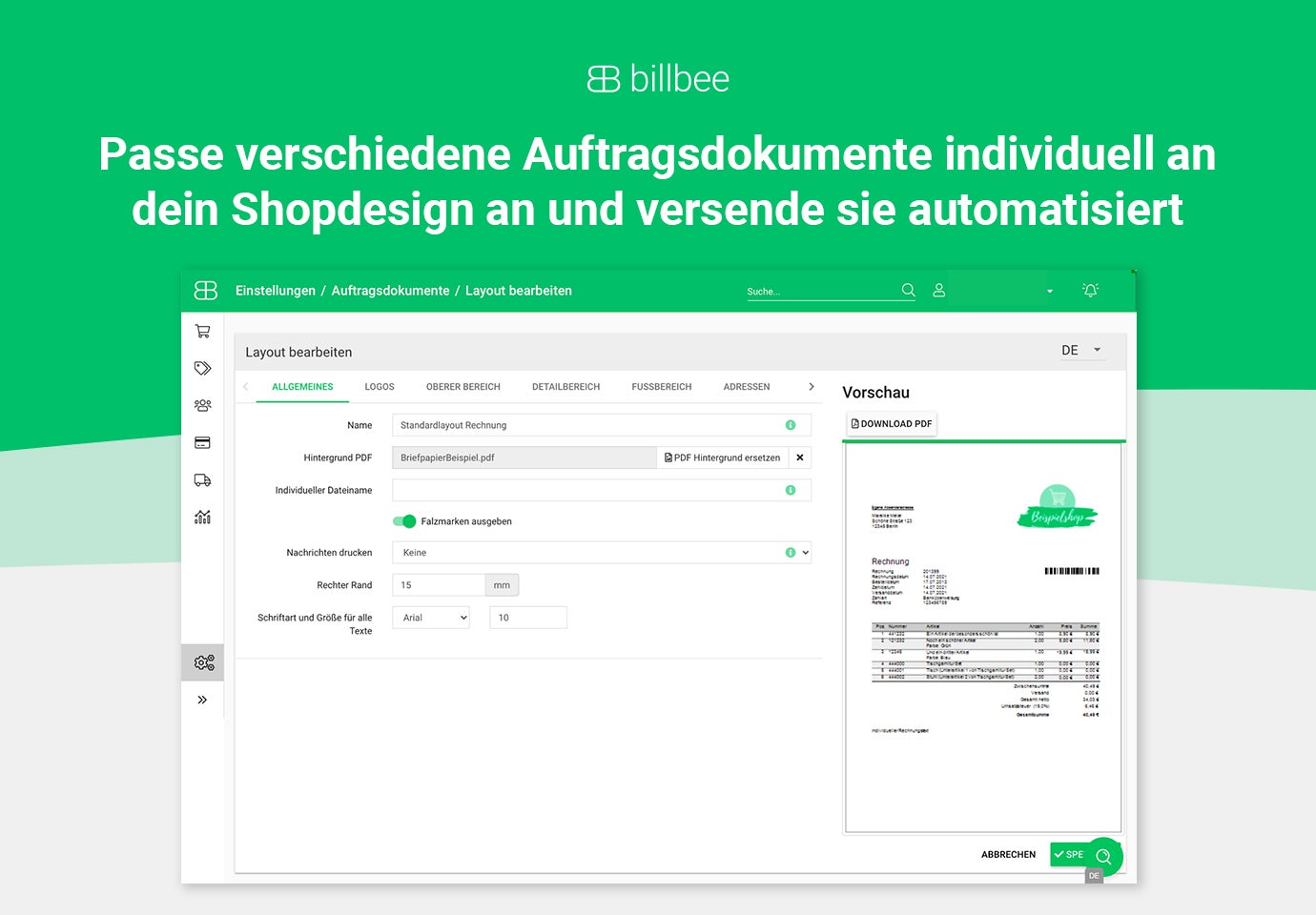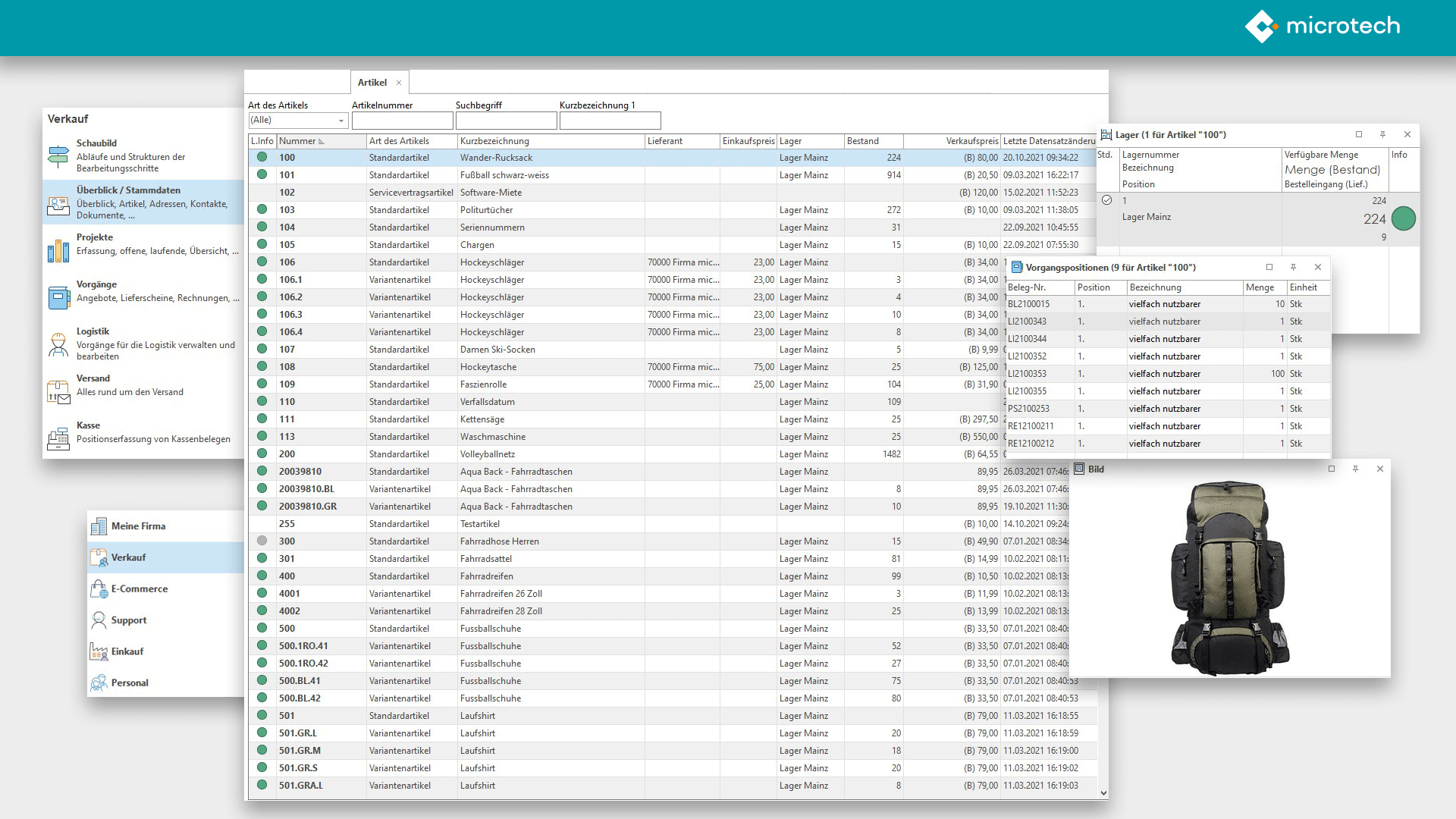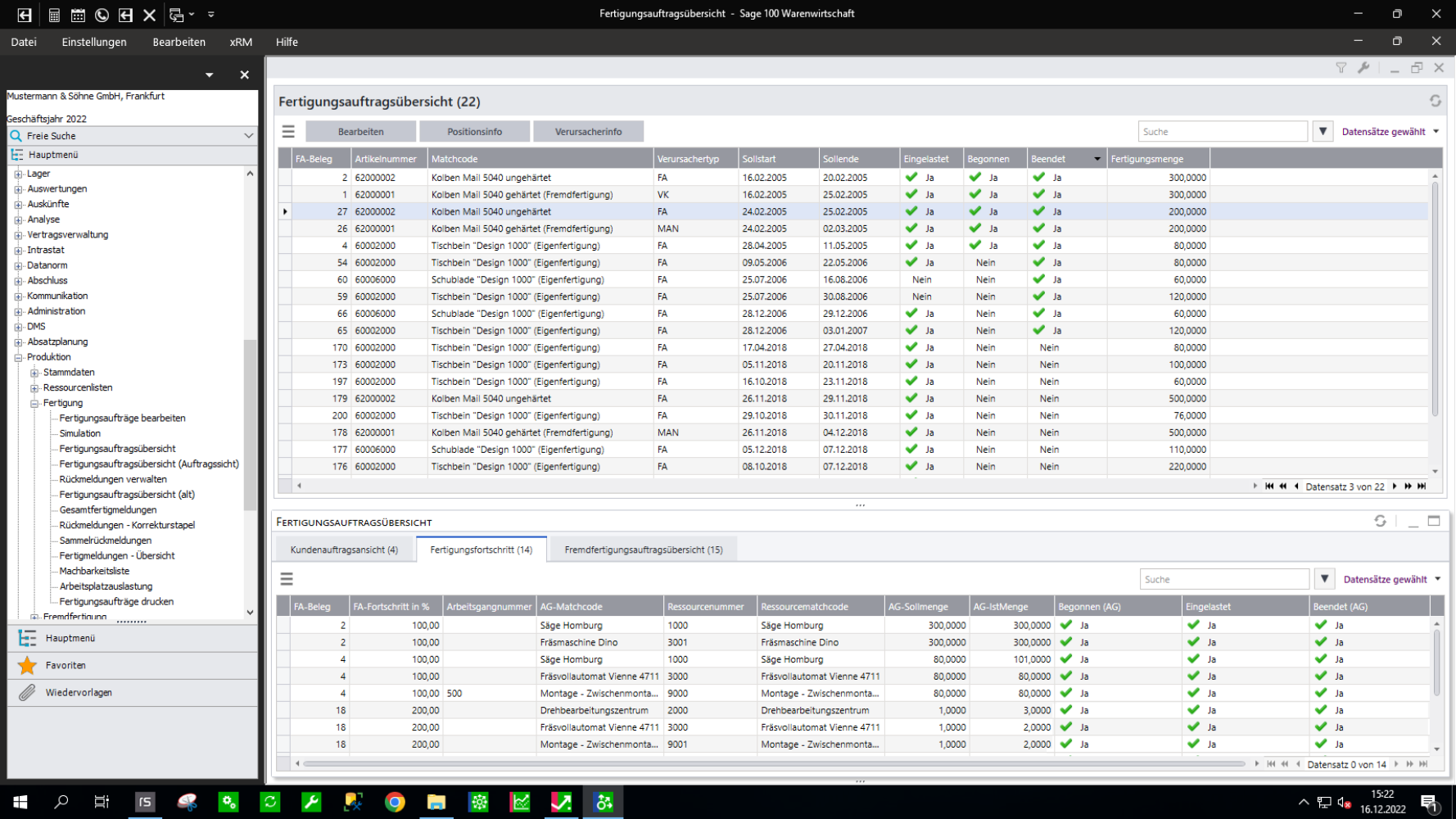The 7 Best Inventory Management Systems
We show you what inventory management systems are and which software is suitable for them.
- Definition: What is an inventory management system?
- What types of inventory management systems are there?
- How does an inventory management system work?
- What are the tasks & goals of an inventory management system?
- What are the advantages of inventory management systems?
- How much does an inventory management system cost?
- The top 7 inventory management system software on OMR Reviews
- 1. Billbee
- 2. orgaMAX
- 3. microtech office+
- 4. weclapp
- 5. DreamRobot
- 6. SAP S/4HANA Cloud, public edition
- 7. Sage 100
- You can find more providers for inventory management system software on OMR Reviews
When you hear inventory management system (IMS), you may quickly think of the supermarket down the street or - three sizes larger - Amazon. But inventory management systems can be found in far more companies. Complex, detailed and constantly able to be optimized. The ever-expanding software landscape has brought numerous new implementation possibilities to the market in recent years, supporting planning, implementation and optimization of inventory management.
We'll briefly and painlessly explain to you what defines an inventory management system, what software is available for it, what costs and benefits come with them and how an inventory management system differs from an ERP. Plenty of answers to important questions, regardless of whether you're dealing with inventory management for the first or the x-th time.
Recommended Merchandise management systems
On our comparison platform OMR Reviews you can find more recommended inventory management systems. So take a look and compare the software with the help of authentic and verified user reviews:
Definition: What is an inventory management system?
An inventory management system maps the flow of goods and materials within a company. Therefore, it defines the processes in purchasing, sales, warehousing, goods receipt and goods issue. Within these structures, an inventory management system must fulfill numerous functions, but above all transport information between all involved areas. Each individual IMS can look very different, which is why the requirements for corresponding software such as ERP systems are divergent. In addition, inventory management systems have interfaces to other business-critical systems such as accounting. Essentially, each inventory management system can consist of different modules.
By the way, Enterprise Resource Planning Systems (ERP) and inventory management systems are not the same. We have dedicated a separate article to the detailed examination of the differences. Accordingly, an ERP presents itself as an expanded inventory management system that manages resource planning for much more than just the movement of goods within a company.
These areas are all covered by an inventory management system.
What types of inventory management systems are there?
In total, there are three different types of inventory management systems. Depending on which type is chosen by the company, different software and modules are used. So choosing the right tool for such a system is not so simple, which does not mean for example that it is sufficient to only go by the rating on OMR Reviews. Much more, you have to look at what requirements your company has and then find the right inventory management system tool. An ERP tool has the advantage of delivering a few more functions to form a holistic system, which is why they are becoming more and more important.
Closed inventory management system
Within a closed system, all tasks - from purchasing, to production to goods distribution - are covered by a single system. There's no in and no out!
Open inventory management system
The opposite is the case with the open inventory management system: It offers the possibility of having one or more parts of the system covered by an external tool. This runs over interfaces.
Integrated inventory management system
The integrated variant also works outward; however, exceeding the boundaries of an inventory management system. Accordingly, externals such as banks, suppliers or online retailers like Amazon are also connected.
How does an inventory management system work?
Whether you're an online retailer with a manageable product portfolio or a huge retail company, an inventory management system always works on the same principle: the physical and computer-assisted processing of goods and/or materials. To this end, the master data such as articles, suppliers, customers, employees, potential buyers and other objects relevant to the database are initially recorded in purchasing. Opposite to this are the movement data, such as offers, invoices, delivery notes or orders. All processes can thus be mapped and controlled from the moment of goods receipt to goods issue.
With a proper inventory management system, you have the opportunity to save a lot of time. Plus, you can input data in a single system, have transparency towards the processes to optimize them, you can use multiple warehouses simultaneously without losing track, and you can adjust your product range based on real statistics. If you think a few steps further, you connect your IMS with a CRM and other nearby functions. For an inventory management system to operate smoothly, appropriate programs should have at least the following functions:
- Purchase of goods
- Documenting goods receipt
- Organize and document storage (logistics & disposition)
- Sales
- Shipping of goods
- Documenting goods issue
- User-friendly interface
What are the tasks & goals of an inventory management system?
To be able to depict and oversee the complexity of your goods trade, the software helps you significantly. Mostly ERP systems or Accounting tools with extended functionality are used, as already mentioned. However, the basic tasks of any inventory management system software are the same: invoicing, inventory, control of goods and evaluation of statistical data. This means that with a IMS, you always have the right amount of goods in the warehouse, the quality is right, you have the lowest possible running costs and all vital information is transferred to all company sectors. If you, together with the right software, master the tasks, you achieve the following goals for your company:
- Specify material liquidity - With a well-functioning inventory management system, you always have the right number of goods in the warehouse, corresponding to the number of anticipated orders. Plus, you can pay attention to quality and price and optimize if necessary.
- Promote (economic) sustainability - Acting economically sustainable to the benefit of the company is one thing. The other is sustainability related to environmental protection. Here, an IMS can also support, so you do not waste resources and can implement further environmentally friendly steps, such as a CO2-reduced transport.
- Optimization of storage and material flows - To save costs, resources and space, you can optimize at all corners with an inventory management system. This is mainly served by numerous statistics, which point out gaps to you. Engaging with an IMS and immersing yourself is intensive at the beginning due to this point alone - regardless of how large your business is.
Tasks and objectives of an inventory management system
What are the advantages of inventory management systems?
The benefits of an inventory management system have already become apparent in some places. Especially when you look at the goals of an IMS, it quickly becomes clear what added value it can bring you in the end:
- Optimization of your costs and inventory
- Analysis of all numbers
- Adjustment of workflows and processes
- More sustainable action
- Quality management
- Transparency in the processes
- Efficient order picking
- All information about the operational processes in one place
- Interfaces to numerous related areas, such as accounting and management
How much does an inventory management system cost?
The costs of an inventory management system show a large range. Between 30 and 1,000 euros per month are possible. But there is no blanket answer to the question. The reason is obvious: The ecosystem of every company is different, which is why the requirements for an IMS tool also vary greatly. For example, someone who runs a small online shop needs significantly fewer features than a company with several jobs, marketplace connections and its own logistics.
Finding the right software should take up a large part of your time, which you have allotted to the inventory management system project. Each provider has a different focus, different interfaces and different modules. It is also smart to see what software and processes are already running in the company and to adapt the inventory management system to it or to replace the existing one.
The rule of thumb 'The more extensive the software, the more extensive the price' also applies to inventory management systems. And since today's good tools usually work modularly, the providers like to indicate that you receive an individual offer. This has the advantage for you that you only pay for what you need. A modular system also adapts to the circumstances - after all, most companies are constantly evolving. Refrain from sector and rigid standard software that offers little leeway.
The top 7 inventory management system software on OMR Reviews
So that you can now plan and implement an inventory management system yourself, we recommend 7 different software, all of which you can find on OMR Reviews. For simplicity, these are led in the category ERP Tools . In all cases, the prices are either available on request or are calculated according to the scope of services with a basic fee as a basis. Inventory management system software tends to be very individually adaptable, which can rarely be priced in advance.
SAP Cloud ERP (ehemals S/4HANA Cloud)
1. Billbee
Billbee is a cloud-based inventory management system that combines all important functions for inventory management. These include order processing with automatic creation of order documents, payment reconciliation, shipping processing and also mailing to customers. The special thing about Billbee is that you get an all-inclusive system that is based on the number of monthly orders. The user interface is intuitive and can be designed according to your preferences. With its experience and constant further development, Billbee positions itself as a trustworthy partner in the industry. If you are new to the field of inventory management systems, Billbee will make it easy for you to get started.
Billbee Prices
The tool is free to test for 30 days. For current price information on Billbee and user reviews related to costs, check out OMR Reviews.
Billbee Alternatives
A list of Alternatives to Billbee and verified user experiences can also be found on OMR Reviews. This way, you can choose the most suitable inventory management system.
2. orgaMAX
orgaMAX presents itself as a comprehensive inventory management system, which goes far beyond simple warehousing and administration. The system integrates CRM, accounting and even digital interfaces for online shops. With orgaMAX, you get a flexible system that is offered in several versions with different functions that fit the individual needs of your company. The tool can also be used directly in the browser without installation.
orgaMAX Prices
The basic module of orgaMAX costs €8 per month. Would you like to receive exact prices for orgaMAX and corresponding user reviews relating to pricing? Then take a look at OMR Reviews.
orgaMAX Alternatives
On OMR Reviews you can discover a compilation of Alternatives to orgaMAX. Thanks to verified user feedback, choosing the right inventory management system is easier.
3. microtech office+
microtech office+ is a comprehensive inventory management system designed specifically for small and medium-sized businesses. What sets microtech office+ apart is its modularity. This means that you can add only the modules you really need, saving cost and simplifying handling. Core functions include order processing, accounting and warehouse management. Microtech office+ offers high adaptability, allowing you to tailor the system to the needs of your company. Another advantage is the integration of e-commerce solutions, facilitating online trading.
microtech office+ Prices
The basic module is available from €99 per month. Are you looking for all current price information for microtech office+? Then you should visit OMR Reviews.
microtech office+ Alternatives
A comprehensive overview of Alternatives to microtech office+ and verified user reports can be found on OMR Reviews. Here you can choose the most suitable inventory management system for you.
4. weclapp
weclapp is a cloud-based inventory management system, which is also suitable for small and medium-sized enterprises. The cloud solution allows you access anywhere, anytime, so you can work flexibly and independent of location. A standout feature of weclapp is its user friendliness and intuitive design. The system covers a variety of business processes ranging from customer management, warehousing to invoicing. Particularly worth highlighting is the seamless integration of CRM and ERP modules. This enables sales, service and accounting to be efficiently networked, optimising business processes and offering an easier overview.
weclapp Prices
The prices for the tool start at €39 per user and month. For current weclapp prices please look at OMR Reviews.
weclapp Alternatives
If you are looking for alternatives to weclapp, OMR Reviews offers a useful overview and verified user feedback to find the most suitable inventory management system.
5. DreamRobot
DreamRobot is an inventory management system that focuses especially on e-commerce. If you run a multi-channel online retail business, DreamRobot could be just right for you. The system offers seamless integrations with many popular marketplaces and shop systems, significantly simplifying the sales process. A big plus is the central order, warehouse and customer management, which minimizes administrative effort and ensures clear overview. Particularly useful are also the automated processes, such as invoice creation or customer communication, which save you a lot of time and effort. The cloud basis also allows access from anywhere and keeps you flexible in your daily business.
DreamRobot Prices
DreamRobot prices start at €19.95 per month. Do you want detailed price information for DreamRobot and corresponding user reviews? Then stop by OMR Reviews.
DreamRobot Alternatives
On OMR Reviews, you'll find a comprehensive list of alternatives to DreamRobot. With verified user experiences and ratings, you can choose the inventory management system that best suits you.
6. SAP S/4HANA Cloud, public edition
When it comes to powerful enterprise solutions, SAP is often among the leaders - and SAP S/4HANA Cloud, public edition is no exception. This system is a cloud-based ERP solution that was specifically developed for larger companies and corporate groups, but can also be used by medium-sized businesses. What's special about S/4HANA is the combination of state-of-the-art in-memory technology with a simplified data architecture. This enables lightning-fast analyses and real-time decision making. It offers modules for all business areas - from finance to procurement to sales and marketing. However, due to the complexity of the software, the implementation can be time-intensive - time that's well invested at the end of the day.
SAP S/4HANA Cloud, public edition Prices
The SAP tool can be tested for 14 days for free, after that the prices are available individually on request. For current price information for SAP S/4HANA Cloud, public edition please look at OMR Reviews.
SAP S/4HANA Cloud, public edition Alternatives
If you are considering alternatives to SAP S/4HANA Cloud, public edition OMR Reviews offers a handy overview and verified user reviews to find the most optimal inventory management system.
7. Sage 100
Sage 100 is another inventory management system that is mainly aimed at small and medium-sized businesses. One of the main advantages of Sage 100 is its scalability. You can start with a basic version and add more modules as needed, depending on how your company's requirements evolve. The system covers a wide range of business functions, including order management, warehousing, financial accounting and customer relationship management (CRM). The integration into the cloud also allows access from anywhere, ensuring flexibility in your daily work. Another plus of Sage 100 is its high user-friendliness, which makes it easy for beginners to quickly find their way around.
Sage 100 Prices
The Warehousing module is available from €52 per user per month. If you want to learn more about the prices of Sage 100 and to see user reviews related to costs, we recommend you have a look at OMR Reviews.
Sage 100 Alternatives
Looking for alternatives to Sage 100? OMR Reviews offers you a comprehensive list of options as well as verified user experiences and ratings to help you choose the right inventory management system.
You can find more providers for inventory management system software on OMR Reviews
As mentioned at the beginning, the search for the right tool for your inventory management system depends on numerous factors. Perhaps the seven pieces you found in our inventory management system comparison are not enough. On OMR Reviews you will find some more, so your comparison does not have to end here.
Just bear in mind: Not all inventory management system software can be found in the ERP category; the categories Accounting or Shop systems are also part of it. Take your time and use the experience of other users.
























